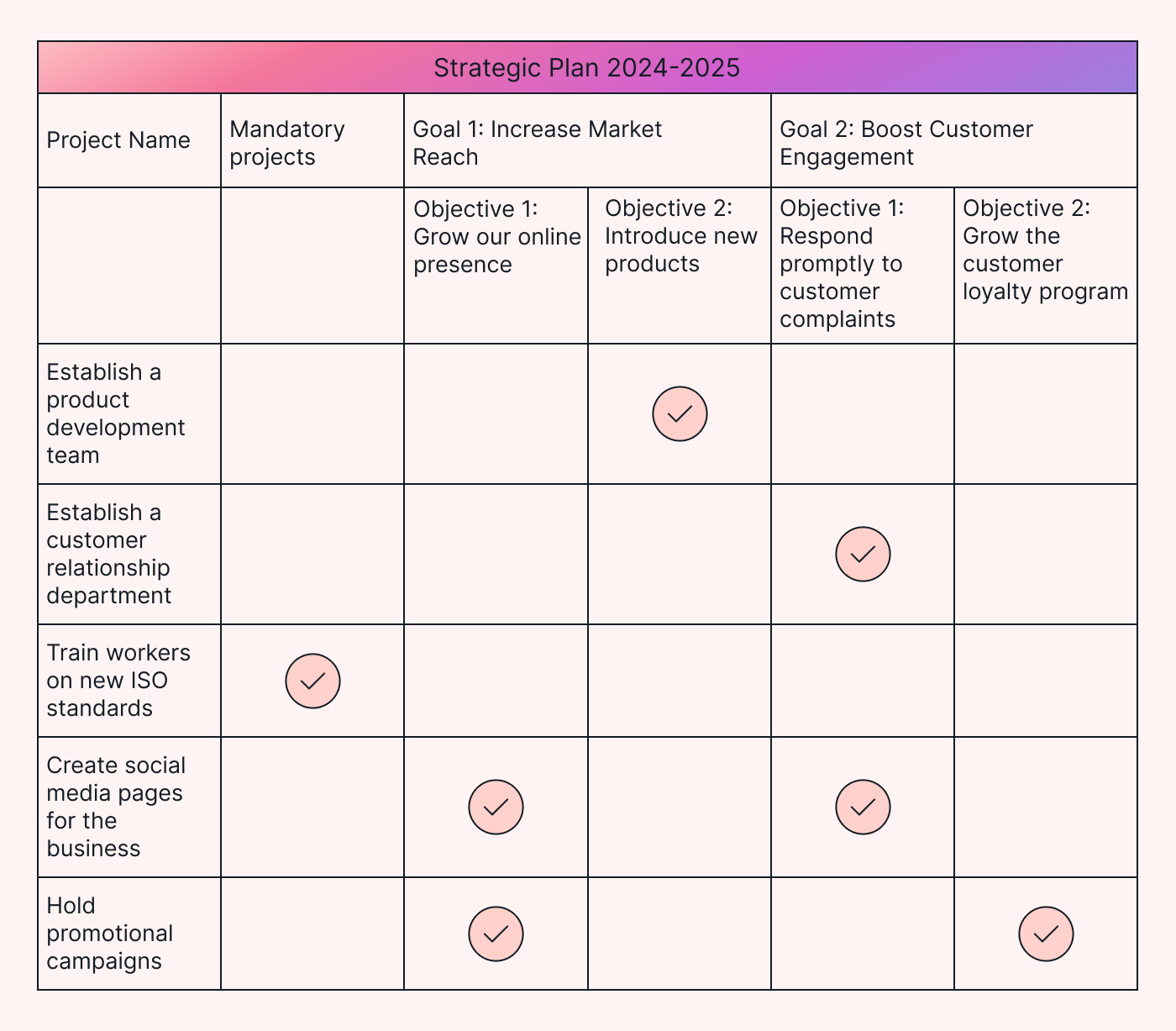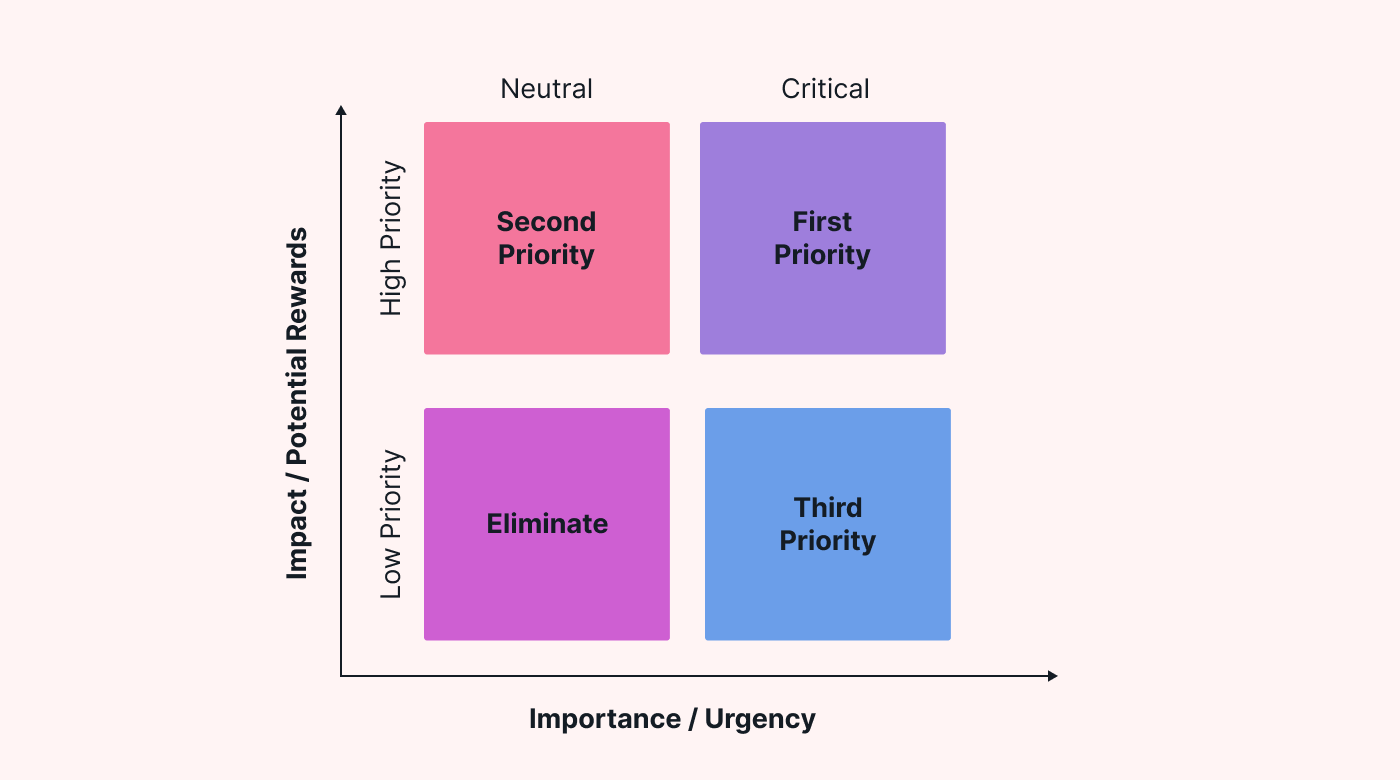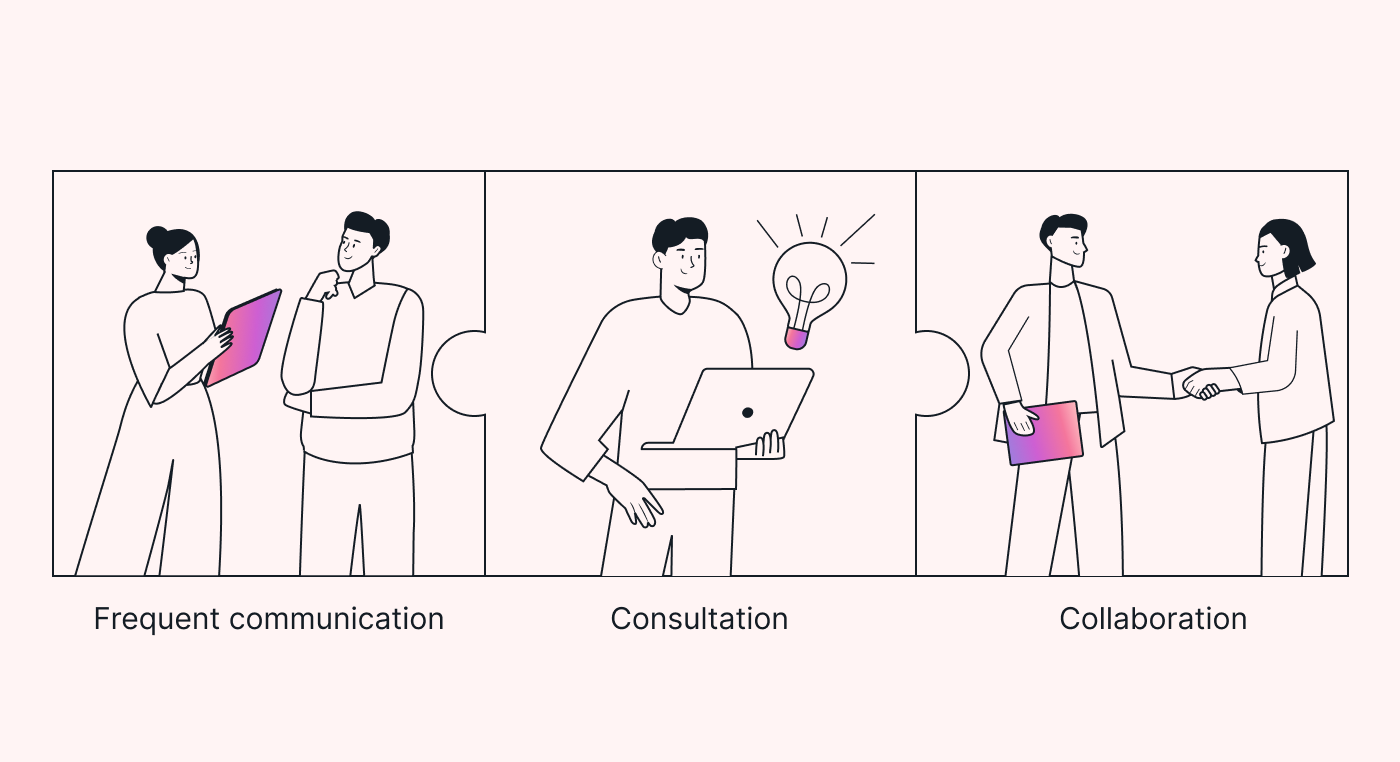All businesses must choose which projects to pursue and which to drop or avoid. Otherwise, they risk sinking resources into the wrong projects. Resources should be allocated to important projects that bring value to the business.
The implications of choosing the right projects are higher for small businesses, considering their limited resources. Allocating resources to projects that don’t support your goals wastes available resources. This could stall your small business.
Recent survey findings show that 53% of business executives believe they should change how they prioritize projects. That means about one in two business executives need help prioritizing projects.
In this article, we’ll explore how small businesses can improve how they prioritize their projects. We’ll also discuss the benefits of effective project prioritization and some practical tips to ensure you choose the projects that offer the most value.
Benefits of prioritizing projects
Below are some ways your business may benefit from prioritizing its projects.
Improved efficiency
Most projects require time and money, two of the most essential resources for a small business. Each project you pursue reduces the available resources. For this reason, you want to assign resources to projects that offer the most value for your business.
The best way to achieve this is by identifying critical business goals. Next, determine business objectives that contribute to achieving these goals. Identifying vital business objectives provides a basis for assessing and ranking projects.
It helps businesses prioritize projects that contribute the most. It also ensures that the most important projects have enough resources to sustain them to completion.
Suppose you start a small bakery business. The two pending projects are furnishing the back office and advancing the product development cycle. Which project would you prioritize? The one that offers the most value for your business at the time is product development.
However, businesses must not lose sight of mandatory projects. These projects don’t contribute directly to business objectives such as increased profits. An example includes conducting a safety audit. Such a project uses company resources without an expected ROI, but it has to be done. Project portfolio management helps businesses balance between high-impact and mandatory projects.
 |
Fast decision-making
Many small business owners prioritize projects subjectively. This is inadvisable, as it leaves room for personal bias. In contrast, prioritizing projects means you’ve established criteria for ranking projects. This means new projects are vetted and prioritized quickly using the set criteria. It lets you decide quickly whether to pursue a project immediately, later, or drop it.
Increased accountability and transparency
Project prioritization helps small businesses establish accountability and transparency in several ways. First, it makes sure a company has clear project prioritization criteria. This reduces the tendency of senior managers to prioritize their pet projects.
Project prioritization also ensures that small businesses allocate resources to the most important projects. Transparent resource allocation means all the involved parties understand why some projects were given resources while others weren’t.
Finally, project prioritization means that projects under way must continue to demonstrate that they will meet their business objectives, and that a set of criteria for monitoring KPIs is established to do that. That’s the flip side of prioritization – measuring to make sure the selected projects help meet the reasons for selecting them.
Common mistakes when prioritizing projects
Some businesses prioritize their projects but fail to achieve their objectives and goals. A common reason businesses fail is prioritizing the wrong projects. Small business owners don’t choose the wrong projects deliberately. This means the mistake happens during the prioritization process. Let’s focus on common mistakes small business owners make during prioritization.
Personal bias
Personal bias is a huge obstacle when prioritizing projects. Most entrepreneurs start businesses with a vision to achieve other goals besides profit maximization. It is not until after starting a business that they realize their vision may not be feasible. Some business owners struggle with letting go of their pet projects. They impose pet projects on their teams, removing resources from more important projects.
Poor communication
Small businesses often struggle with communication and stakeholder engagement during project prioritization, or during project execution. One reason might be that they lack a stakeholder management plan. It is only until later that they suffer the repercussions.
Suppose a small business has identified a safety audit and renovating the waiting lounge as its two pending projects. The business may be drawn to the renovation project because of the expected visitor response. However, stakeholders such as employees may lean towards implementing a safety audit. Ignoring your key stakeholders’ input may result in prioritizing the wrong projects and losing their support.
Focusing on urgency OR importance
Some projects are urgent but not important. Others are important but not urgent. Some businesses prioritize projects based on one metric instead of both. They end up prioritizing the wrong projects.
 |
Take the example of a “project,” like attending a quarterly conference for networking opportunities. This is an important project, considering you can network with potential clients or with potential business partnerships. However, opting to attend the conference over working on a quotation due the same day may cause you to lose business.
Succumbing to the allure of new projects
Business owners are often drawn to new projects and forget about the pending ones. Pursuing titles like “The first business to do …” often misleads small businesses to give resources to the wrong projects. It’s also likely that a business may not have done its due diligence before jumping into a project — such mistakes waste company resources.
All of these common mistakes may arise from failure to establish and gain consensus on business objectives, and making sure everything you do supports those. If your projects don’t do that, either you’re selecting the wrong projects, or you need to revise your objectives.
Steps for prioritizing projects
Small businesses should establish criteria for prioritizing their projects. You want to assign your precious resources to the most important projects. You must also ensure a smooth transition from one project to the next. Below are seven simple steps for prioritizing projects.
1. Identify all potential projects
The first step in prioritizing projects is to prepare a list of projects (existing and potential). This ensures small businesses consider the whole picture when choosing which projects to implement and in which order. Take the example of a small business like a restaurant or cafe. Some potential projects may include:
- Introducing new meals on the menu,
- Implementing a food delivery app,
- Renovating the sitting area,
- Launching cooking classes, and
- Holding a training workshop on food hygiene and safety
2. Outline project objectives and goals
Next, outline each project's specific objectives and goals. For example, the objective of expanding the restaurant's menu might be to attract a new demographic. Similarly, a restaurant business may implement a food delivery app to boost sales. Both projects share the same goal of maximizing business profits.
In contrast, the objective of holding a food hygiene and safety workshop may not be profit-driven. The objective may be to follow food health and safety regulations, which is mandatory.
3. Research and gather information about the projects
This is one of the most important steps of project prioritization. The collected information should be comprehensive and accurate because it influences decision-making. Some of the information collected in this step includes:
- Scope of the project,
- Required resources,
- Project timelines, and
- Potential risks.
4. Cost-benefit analysis
Is the project worth it? One way to answer this question is through cost-benefit analysis. Small businesses must assess whether the expected benefits justify the financial investment. What are your financial objectives, and how does this project support one or more of them?
Let's keep our example of a restaurant business. The business owner(s) should determine whether implementing a food delivery app will increase profits. Some of the anticipated costs may include paying for the app and acquiring a delivery truck. Yet, the project is expected to increase sales.
 |
However, small businesses should be careful not to assess mandatory projects using the cost-benefit analysis lens. Projects like safety training and audits spend company resources without any expected ROI.
5. Determine each project's impact
How does the project impact strategic goals? Answering this question provides a basis for prioritizing projects. It also makes sure project prioritization is transparent. Usually, a project may contribute to one or more projects. Projects that contribute to multiple business objectives are more impactful and should be prioritized.
The example above illustrates how a business can gauge the impact of different projects. Creating social media profiles and organizing promotional campaigns impact at least two business objectives. The business should prioritize these projects as they contribute the most to the most important objectives.
 |
Also, notice that the project on employee training doesn’t impact any business objectives. However, it may impact other business areas like compliance and licensing. And, training of the right kind will certainly improve your employees’ ability to effectively deliver your projects.
6. Determine the order of undertaking high-impact projects
Once you identify the high-value projects, the next step should be to prepare a priority list based on urgency. The goal is to prioritize high-impact projects with the shortest deadlines. You should do critical tasks or projects first.
Next, schedule high-impact projects that have long deadlines. This makes sure that they aren’t overlooked in the future. You can also break these into multiple smaller projects. Business owners may delegate or outsource low-impact projects with short deadlines. This allows the business to focus on urgent, high-impact projects. Finally, you should drop projects considered low-impact and not urgent.
7. Review and reprioritize projects
A project's impact may vary over time. Factors like new regulations and market trends may increase or reduce a project's impact. Let's use the example of the restaurant business.
Suppose at the start of 2020, the owners had prioritized renovating the restaurant over developing the delivery app. The onset of COVID-19 forced many people to work from home. This increased the demand for food delivery services. Such an unforeseen event would prompt the business to prioritize implementing the app over renovating the restaurant.
Tips for prioritizing projects
Small businesses should prioritize the right projects to ensure they achieve their goals. Below are some helpful tips businesses can use when prioritizing projects.
Prioritize projects that align with business goals and objectives
Businesses should prioritize projects that contribute the most to the most important objectives. To achieve this, businesses must work forward, starting with business goals and objectives.
Take the example of a cake and pastries shop to increase its revenue by 10% over 12 months. It must have related business objectives like improving customer service and expanding its menu to achieve this goal.
The cake business can use these objectives to identify which projects to prioritize. For example, a project targeting new cake recipes and baking styles aligns with an important business objective and goal.
 |
Engage your stakeholders
Engage your stakeholders throughout the project prioritization process. The involved stakeholders may vary depending on the project. Take the example of expanding the food menu. Some essential stakeholders include chefs and target customers. Involving the chefs provides important insight into whether they have the expertise to prepare the new meals and manage the increased workload.
Confirm project feasibility
Most projects are capital-intensive. Yet, small businesses often face resource constraints. Business owners should confirm they have adequate resources to complete a project. If not, it’s advisable to put the project on hold until they can meet project requirements.
Evaluate the projects regularly
Most businesses operate in dynamic markets. Factors like changes in customer preferences and market trends may affect a project’s impact. Thus, businesses should periodically evaluate projects to confirm they’re still aligned with their company goals.
Reprioritize the projects based on new information
Businesses should adapt quickly to new information. Otherwise, they may continue allocating resources to "dead" projects. Businesses should be willing to put on hold ongoing projects and introduce a new list of projects. Take the example of the restaurant business. Prioritizing the food delivery app during the pandemic offers more benefits for the business than renovating the premises.
Use a prioritization matrix
Small businesses can use a prioritization matrix to make the process objective. It helps businesses prioritize projects based on their impact and urgency. This way, businesses allocate resources to the most important projects.
Boost your business success by prioritizing the right projects
Small businesses stand to gain from effective project prioritization. The most apparent benefit is productive resource utilization. No business wants to waste time and money on the wrong projects.
Prioritizing the right projects requires having clear criteria for assessing and ranking projects. Small business owners can use project management software like Motion to simplify prioritization. For example, they can use Motion to schedule prioritization meetings and reviews.
Motion is also effective for allocating and tracking tasks related to project prioritization. Upon ranking the projects, businesses can use Motion to allocate and track project tasks for specific team members. And Motion can track the ongoing progress of all your projects. Being on track is important to the continued value of your projects.
Small business owners looking to improve their priorities and deliver projects can try Motion for free.





